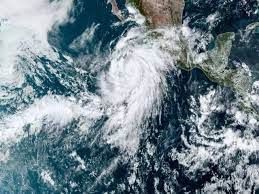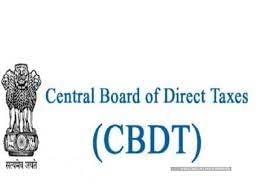UPSC Daily Current Affairs- 21st August 2023 | Current Affairs & Hindu Analysis: Daily, Weekly & Monthly PDF Download
GS-I
Ajnala Massacre of 1857 and its Rediscovery
Subject: Modern History

Why in News?
A recent collaborative effort of professional geneticists has resulted in a scientific confirmation of the Ajnala massacre – an event lost to history for 165 years.
- This project, marked by emotional intensity and rigorous analysis, brought long-lost victims to light through molecular and isotope data.
Ajnala Massacre
- Buried Tragedy: 282 soldiers of the 26th Native Bengal Infantry Regiment met a brutal fate during the 1857 uprising, drowned in a well by the British East India Company.
- Discovery of Location: Cooper’s book provided clues that helped locate the 1857 Kallianwala Martyrs’ Well beneath the Gurdwara Singh Sabha in Ajnala.
- Chance Encounter: In 2003, historian Surinder Kochhar found a reference to ‘Ajnala’ in a discarded book titled “Crisis in Punjab” by Frederick Henry Cooper.
- Massacre Rediscovered: Kochhar’s research led to the revelation of the Ajnala Massacre, a grim incident hidden for over 157 years.
Excavation and Revelation
- Unveiling the Remains: The well was excavated in 2014, exposing the skeletal remains of the soldiers.
- Gruesome Discovery: During the 1857 Sepoy mutiny, many Indian soldiers revolted against the British. Around 500 revolted at Mian Mir Cantonment in Lahore.
- Evading execution: They swam across the Ravi River to reach the town of Ajnala, now in Amritsar district. Of them, 218 were killed by British soldiers at Dadian Sofian village near Ajnala.
- Dumped into a well: The remaining 282 were stuffed in a small room, where many died of asphyxiation. The rest were shot dead and their bodies were thrown into a well, which was later named “Kalianwala Khu” and “Shaheedan da Khu”.
Verification and Acknowledgment
- Scientific Verification: DNA-based evidence confirmed that the remains belonged to soldiers of the 26th Native Bengal Infantry regiment.
- Historical Importance: The Ajnala Massacre adds to the narrative of the 1857 Indian uprising against the British East India Company’s oppression.
Conclusion
- The Ajnala Massacre underscores the often-overlooked brutalities of the 1857 Indian uprising.
- The lack of acknowledgement and memorials can be attributed to the government’s hesitance to address uncomfortable aspects of history.
Source: The Hindu
What makes Hurricane Hilary ‘unprecedented’
Subject: Geography

Why in News?
Hurricane Hilary is set to become the first tropical storm to hit the Southern California in more than 80 years.
- As per the country’s National Weather Service (NWS), in an average 3-year period, roughly five hurricanes strike the US coastline – but never in the west coast.
- This is why Hurricane Hilary, which is currently racing towards Southern California and Mexico, is so out of the ordinary.
Hurricane
- A hurricane is a powerful and destructive tropical storm characterized by strong winds, heavy rainfall, and low atmospheric pressure.
- Hurricanes are also known as cyclones or typhoons in different parts of the world; the term used depends on the region.
- In the Atlantic Ocean and eastern North Pacific, they are called hurricanes, while in the northwestern Pacific, they are referred to as typhoons, and in the South Pacific and Indian Ocean, they are known as cyclones.
Key characteristics of hurricanes
- Low Pressure Centre
- Hurricanes have a well-defined centre of low atmospheric pressure, known as the eye.
- The eye is typically calm and clear, with light winds, surrounded by a ring of intense thunderstorms called the eyewall.
- Strong Winds
- Hurricanes are known for their powerful winds that can reach sustained speeds of at least 74 miles per hour (119 kilometers per hour) or higher.
- Heavy Rainfall
- Hurricanes produce heavy rainfall, which can lead to flooding, landslides, and storm surges (a rise in sea level along the coast caused by the hurricane's winds pushing water toward the shore).
- Formation
- Hurricanes form over warm ocean waters when the sea surface temperature is typically above 26 degrees Celsius (79 degrees Fahrenheit).
- Warm, moist air rises from the ocean's surface, creating an area of low pressure.
- As the air cools and condenses, it releases heat, which fuels the storm's development.
- Categories
- Hurricanes are categorized on the Saffir-Simpson Hurricane Wind Scale based on their maximum sustained wind speeds.
- The scale ranges from Category 1 (weakest) to Category 5 (strongest), with each category representing a higher wind speed and potential for damage.
News Summary: What makes Hurricane Hilary ‘unprecedented’
- As per the recent public advisory issued by the US National Hurricane Centre, the storm was very near the west coast of Baja California.
- Baja California – The long Mexican peninsula bound by the Gulf of California in the east and the North Pacific Ocean in the west.
- This is extraordinary as the only tropical storm with hurricane-force winds believed to have hit Southern California came in October 1858, with San Diego bearing its brunt.
Why this is so rare?
- Nature of the ocean
- The primary reason why the Pacific coast seldom sees such tropical storms and hurricanes is the nature of the ocean itself.
- The first condition for the formation of hurricanes is that ocean waters must be above 26 degrees Celsius.
- Below this threshold temperature, hurricanes will not form or will weaken rapidly once they move over water below this threshold.
- While high temperatures are common during hurricane season along the US east coast, the west coast is much colder.
- In the Atlantic, warm, equatorial waters are transported north to higher latitudes along the US coast via the Gulf Stream.
- However, along the US west coast, in the Pacific, cold current steers colder water from higher latitudes toward equatorial regions.
- This makes hurricanes highly unlikely.
- Vertical wind shear
- It is the change in wind speed as one travels up from the Earth’s surface — especially in the upper level of the atmosphere.
- It is an important ingredient in formation of hurricanes as they can extend up to 16 km into the atmosphere.
- Hurricanes cannot emerge if the upper-level winds are strong.
- This is because they destroy the storms structure by displacing the warm temperatures above the eye and limiting the vertical accent of air parcels.
- Usually, wind shear in the eastern Pacific is much stronger than the Gulf of Mexico, causing less frequent hurricanes along the western coast.
- Influence of wind steering patterns
- Trade winds play a crucial role in directing hurricanes towards the east coast.
- The same winds divert them away from the west coast.
- Hurricanes originating in the eastern Pacific, often near the central Mexico coastline, generally follow a west-northwest trajectory that take them away from the coast.
So, is climate change the culprit?
- Scientists expected climate change to not only spike the occurrence of such hurricanes, but also make them more intense.
- This is due to the rise of the surface temperatures of the oceans.
- The oceans are known to have absorbed 90 per cent of the additional heat generated by the greenhouse gas emissions in recent years.
- Due to this, global mean sea surface temperature has gone up by close to 0.9 degree Celsius since 1850 and around 0.6 degree Celsius over the last four decades.
- Higher sea surface temperatures cause marine heat waves, an extreme weather event, which can also make storms like hurricanes and tropical cyclones more intense.
- Warmer temperatures escalate the rate of evaporation along with the transfer of heat from the oceans to the air.
- When storms travel across hot oceans, they gather more water vapour and heat. This results in stronger winds, heavier rainfall and more flooding when storms reach the land.
- The situation has been worsened by the El Nino, developing for the first time in seven years.
- El Nino is a weather pattern that refers to an abnormal warming of surface waters in the equatorial Pacific Ocean.
- This has weakened the vertical wind shear in the eastern Pacific, allowing more hurricanes in the region.
Source: The Hindu
GS-II
National E-Commerce Policy
Subject: Polity and Governance

Why in News?
The proposed national e-commerce policy being formulated by the commerce and industry ministry is in the final stages and no new draft policy will be issued now for seeking views of stakeholders.
Background:
- Electronic commerce (e-commerce) is emerging as a crucial catalyst for Indian economic growth and development.
- As per the estimates, grocery and fashion/apparel being the key drivers, the Indian e-commerce industry would be valued at $99 billion in 2024, eventually growing to $300 billion by 2030.
- Recognizing its potential, the government is closely monitoring the evolving electronic business landscape, which requires a regulatory framework to protect buying, selling, marketing, and distribution activities.
- In 2019, a draft National E-Commerce policy was prepared and placed in public domain.
- In response to the draft Policy, comments of a number of foreign governments have been received, including the US Government flagging issues of US businesses.
- In August 2023, the Department for Promotion of Industry and Internal Trade (DPIIT) held a detailed discussion with representatives of e-commerce firms and a domestic traders' body on the proposed policy.
- A government official said that a consensus has emerged among the concerned stakeholders on the proposed policy.
Major Takeaways of the Draft National E-Commerce Policy:
- The Ministry of Commerce and Industry released the draft National E-Commerce Policy on 23 February 2019 (DPIIT 2019).
- The aim of the policy is to enhance consumer protection, data privacy and create a level playing field.
- The 2019 draft proposed to address six broad areas of the e-commerce ecosystem –
- Data,
- Infrastructure development,
- E-commerce marketplaces,
- Regulatory issues,
- Stimulating the domestic digital economy, and
- Export promotion through e-commerce.
- The draft talks about –
- Framework for restrictions on cross-border data flow;
- Collection or processing of sensitive data locally and storing it abroad;
- Measures to contain the sale of counterfeit products, prohibited items, and pirated content; and
- Review of the current practice of not imposing custom duties on electronic transmissions in the light of the changing digital economy.
- Besides, it suggests provisions for promoting exports through e-commerce; and developing capacity for data storage in India.
- The policy aims for inclusive growth in the digital space and in the e-commerce sector along with Make in India and Digital India programmes.
- The government hopes to encourage competition and prevent market failures and other market distortions.
Advantages of the Draft E-Commerce Policy:
- The strongest element is that of information provision — Firms are expected to provide clear information regarding product details, photos, returns and exchange rules, modes of payment, grievance redressal mechanisms, etc.
- A related point is to set up clear grievance redressal mechanisms including nodal officers, timeframes and processes.
- This is a positive outcome for the consumers since good/transparent information and frictionless pre- and post- purchase processing are keys to a healthy e-commerce market.
- Platforms are required to open up the details of the sellers (name, location, contact details, etc.).
- This is good since buyers can now decide to do business with sellers beyond a platform (if they wish to).
- Platforms cannot use the vast data available to them to gain unfair advantage over sellers or show differential treatment between sellers. This is an important rule that goes a long way in ensuring seller welfare.
Criticism of the Draft E-Commerce Policy:
- The proposed rules infringe on other ministries’ mandates.
- For instance, the ‘fallback-liability’ clause holds platforms liable for any mis-selling by third party sellers.
- However, this runs counter to the FDI rules of the Finance Ministry — preventing platforms from explicitly managing their inventory.
- Further, it takes away the immunity granted specifically to marketplaces under the IT Act.
- Similarly, the Ministry of Corporate Affairs feels that rules related to the abuse of competitive position are unnecessary since there is already a robust Competition Commission of India that oversees such issues.
- The proposal also refrains related parties from commercial activities on platforms.
- A related party is any entity with common shareholders of over 5 per cent or more than 10 per cent ownership.
- While the motivation for this clause is noble, it won’t make any sense from a regulatory perspective.
Source: Money Control
India launches Global Initiative on Digital Health (GIDH)
Subject: Polity and Governance

Why in News?
In a significant stride towards global healthcare innovation, the World Health Organization (WHO) and India’s G20 presidency have jointly unveiled the ‘Global Initiative on Digital Health’ (GIDH).
- The announcement was made at the Health Minister’s Meeting during the G20 Summit, hosted by the Indian Government.
What is GIDH?
- WHO and G20 Partnership: The WHO and India’s G20 presidency collaboratively introduced the ‘Global Initiative on Digital Health’ (GIDH).
- Strategy Implementation: GIDH functions as a WHO-managed platform, supporting the implementation of the ‘Global Strategy on Digital Health 2020–2025.’
- Transformation Acceleration: The WHO, as the strategy’s Secretariat, facilitates the global convergence of standards, best practices, and resources for expediting digital health system transformation.
Objectives of the GIDH Initiative
- Measurable Outcomes: GIDH aspires to unite nations and partners, aiming to achieve tangible results through concerted efforts.
- Prioritizing Investment Plans: The initiative seeks to establish focused investment plans for the transformation of digital health, driven by clear priorities.
- Enhancing Resource Transparency: GIDH works towards greater transparency in reporting digital health resources, ensuring effective resource allocation.
- Facilitating Global Collaboration: The initiative fosters the exchange of knowledge and collaboration among regions and countries to expedite progress.
- Comprehensive Governance: GIDH supports holistic government approaches to digital health governance within countries.
- Boosting Support: The initiative aims to enhance both technical and financial support for the implementation of the ‘Global Strategy on Digital Health 2020–2025’ and its forthcoming phase.
India’s Role and Vision
- Digital Health Innovation: India’s G-20 Health Minister emphasized India’s role in digital health innovation at the G-20 Health Ministers’ Meeting.
- National Digital Health Architecture: India’s efforts for a comprehensive digital health ecosystem, exemplified by the Ayushman Bharat Digital Mission (ABDM), were highlighted.
Source: Money Control
Anti-Ragging Laws or Policies in India
Subject: Polity and Governance

Why in News?
An 18-year-old undergraduate student died after falling from the 2nd floor of his hostel in the Jadavpur University campus in Kolkata last week.
- As the family of the student has alleged that he was being ragged on campus, the article highlights how the Indian laws/ policies deal with ragging.
The Supreme Court of India on Ragging:
- Meaning: The Court in a 2001 (Vishwa Jagriti Mission) case, defined ragging as:
- Any disorderly conduct (by words spoken or written or by an act), which has the effect of causing annoyance, hardship or psychological harm/ shame or embarrassment in a fresher or a junior student, adversely affecting their physique or psyche.
- The cause of indulging in ragging: To derive sadistic pleasure (by inflicting pain) or showing off power, authority or superiority by the seniors over their juniors or freshers.
- What the SC said? It termed ragging as the “menace pervading the educational institutions of the country.”
- Key guidelines on anti-ragging:
- Setting up proctorial committees to prevent ragging and internally address complaints against ragging.
- If the ragging becomes unmanageable or amounts to a cognisable offence the same may be reported to the police.
The UGC Guidelines to Prevent Ragging:
- In 2009, the SC in another case dealt with the ragging issue appointed a committee headed by former CBI Director RK Raghavan.
- The recommendations of the committee were subsequently formalised by the University Grants Commission (UGC) in the form of detailed guidelines for universities on anti-ragging.
- The guidelines [The Regulations on Curbing the Menace of Ragging in Higher Educational Institutions] include 9 explanations of what could constitute ragging:
- Teasing, treating or handling a fellow student with rudeness;
- Causing physical or psychological harm;
- Causing or generating a sense of shame;
- Academic activity of any other student or a fresher;
- Exploiting a fresher or any other student for completing academic tasks assigned to an Individual or a group of students;
- Financial extortion or forceful expenditure;
- Homosexual assaults, stripping, forcing obscene and
- Lewd acts, gestures, causing bodily harm.
- At an institutional level, the UGC requires universities to declare its intent publicly to prevent ragging and requires students to sign an undertaking that they will not engage in ragging activities.
- The institution shall set up appropriate committees, including the course-incharge, student advisor, Wardens and some senior students as its members, to actively monitor, promote and regulate healthy interaction between the freshers and seniors.
- If found guilty by the anti-ragging committee, the UGC guidelines require any member of the committee to “proceed to file a First Information Report (FIR), within 24 hours of receipt of such information.
Laws to Prevent Ragging in India:
- While ragging is not a specific offence, it could be penalised under several other provisions of the Indian Penal Code (IPC).
- For example, the offence of wrongful restraint is criminalised under Section 339 of the IPC which is punished with simple imprisonment up to 1 month, or with fine up to Rs 500, or with both.
- Wrongful restraint is an offence when a person is prevented from proceeding in any direction in which that person has a right to proceed.
- Section 340 criminalises wrongful confinement which is defined as wrongfully restraining any person in such a manner as to prevent that person from proceedings beyond certain circumscribing limits.
- Several states have special laws for anti-ragging. For example,
- The Kerala Prohibition of Ragging Act 1998 provides for suspension or dismissal of the student accused of ragging and mandatorily requires the college administration to inform the nearest police station.
- If an educational institution fails to do so, it would be “deemed abetment” to commit the offence.
Way Ahead:
- Fixing the accountability of authorities.
- Add more teeth to anti-ragging laws at the central and state levels.
- Conducting regular campus checks and awareness building exercises (among freshers regarding safeguards available) at the campuses especially during the first few months of the beginning of a new session.
Source: The Hindu
GS-III
INS Trikand
Subject: Defence and Security

Why in News?
Indian Naval Ship INS Trikand received a warm welcome upon its arrival at Bandar Abbas, the port city of Iran recently.
About INS Trikand:
- It is a Talwar-class guided-missile frigate of the Indian Navy.
- It is the third and final ship of the second batch of Talwar-class frigates ordered by the Indian Navy.
- It was built by the Yantar shipyard in Kaliningrad, Russia.
- Commissioning:
- INS Trikand was commissioned into the Indian Navy on June 29, 2013.
- The ship is named after the Trikand Fort, which is located near Porbandar, Gujarat.
- It is part of the Indian Navy's Western Fleet and operates under the Western Naval Command headquartered in Mumbai.
- Features:
- The ship is equipped with advanced sensors and weapon systems.
- It features various anti-ship and anti-aircraft missile systems, torpedoes, and a 100mm main gun.
- It incorporates stealth technology, including reduced radar cross-section, to enhance its survivability in hostile environments.
- It is equipped with anti-submarine warfare (ASW) capabilities, including ASW helicopters and torpedo launchers, which make it effective in countering underwater threats.
- With a long reach and a state-of-the-art combat suite, the ship is designed to undertake a wide spectrum of naval operations.
Source: Economic Times
Crafting safe Generative AI systems
Subject: Science and Technology

Why in News?
The advent of generative artificial intelligence (AI) presents a world of possibilities and challenges.
Central idea
- The rapid rise of generative AI is reshaping our world with technological wonders and societal shifts. LLMs like ChatGPT promise economic growth and transformative services like universal translation but also raise concerns about AI’s ability to generate convincingly deceptive content.
What is generative AI?
- Like other forms of artificial intelligence, generative AI learns how to take actions based on past data.
- It creates brand new content—a text, an image, even computer code—based on that training instead of simply categorizing or identifying data like other AI.
- The most famous generative AI application is ChatGPT, a chatbot that Microsoft-backed OpenAI released late last year.
- The AI powering it is known as a large language model because it takes in a text prompt and, from that, writes a human-like response.
What are large language models (LLMs)?
- Large Language Models (LLMs) are advanced AI systems designed to understand and generate human-like language.
- They use vast amounts of data to learn patterns and relationships in language, enabling them to answer questions, create text, translate languages, and perform various language tasks.
Potential of large language models
- Economic Transformation: LLMs are predicted to contribute $2.6 trillion to $4.4 trillion annually to the global economy.
- Enhanced Communication: LLMs redefine human-machine interaction, allowing for more natural and nuanced communication.
- Information Democratization: Initiatives like the Jugalbandi Chatbot exemplify LLMs’ power by making information accessible across language barriers.
- Industry Disruption: LLMs can transform various industries. For example, content creation, customer service, translation, and data analysis can benefit from their capabilities.
- Efficiency Gains: Automation of language tasks leads to efficiency improvements. This enables businesses to allocate resources to higher-value activities.
- Educational Support: LLMs hold educational potential. They can provide personalized tutoring, answer queries, and create engaging learning materials.
- Medical Advances: LLMs assist medical professionals in tasks such as data analysis, research, and even diagnosing conditions. This could significantly impact healthcare delivery.
- Entertainment and Creativity: LLMs contribute to generating creative content, enhancing sectors like entertainment and creative industries.
- Positive Societal Impact: LLMs have the potential to improve accessibility, foster innovation, and address various societal challenges.
Case study: Jugalbandi Chatbot
- Overview: The Jugalbandi Chatbot, powered by ChatGPT technology, is an ongoing pilot initiative in rural India that addresses language barriers through AI-powered translation.
- Universal Translator: The chatbot’s core function is to act as a universal translator. It enables users to submit queries in local languages, which are then translated into English to retrieve relevant information.
- Accuracy Challenge: The chatbot’s success relies on accurate translation and information delivery. Inaccuracies could perpetuate misinformation.
- Ethical Considerations: Ensuring accuracy and minimizing biases in translation is crucial to avoid spreading misconceptions or causing harm.
- Cultural Sensitivity: The initiative highlights the need for culturally sensitive deployment of advanced AI technology in diverse linguistic contexts.
- Positive Transformation: Jugalbandi Chatbot showcases the potential benefits of leveraging AI for bridging language gaps and providing underserved communities with access to information.
- Complexities and Impact: As the pilot progresses, its effectiveness and impact will become clearer, shedding light on the complexities and possibilities of utilizing AI to address real-world challenges.
Concerns associated with large language models
- Misinformation Propagation: LLMs can be harnessed to spread misinformation and disinformation, leading to the potential for public confusion and harm.
- Bias Amplification: Biases present in training data may be perpetuated by LLMs, exacerbating societal inequalities and prejudices in generated content.
- Privacy Risks: LLMs could inadvertently generate content that reveals sensitive personal information, posing privacy concerns.
- Deepfake Generation: The capability of LLMs to create convincing deepfakes raises worries about identity theft, impersonation, and the erosion of trust in digital content.
- Content Authenticity: LLMs’ production of sophisticated fake content challenges the authenticity of online information and poses challenges for content verification.
- Ethical Considerations: The development of AI entities indistinguishable from humans raises ethical questions about transparency, consent, and responsible AI use.
- Regulatory Complexity: The rapid progress of LLMs complicates regulatory efforts, necessitating adaptive frameworks to manage potential risks and abuses.
- Security Vulnerabilities: Malicious actors could exploit LLMs for cyberattacks, fraud, and other forms of digital manipulation, posing security risks.
- Employment Disruption: The widespread adoption of LLMs might lead to job displacement, particularly in sectors reliant on language-related tasks.
- Social Polarization: LLMs could exacerbate social polarization by facilitating the dissemination of polarizing content and echo chamber effects.
What is the identity assurance framework?
- The identity assurance framework is a structured approach designed to establish trust and authenticity in digital interactions by verifying the identities of entities involved, such as individuals, bots, or businesses.
- It aims to address concerns related to privacy, security, and the potential for deception in the digital realm.
- The framework ensures that parties engaging in online activities can have confidence in each other’s claimed identities while maintaining privacy and security.
- The key features:
- Trust Establishment: The primary objective of the identity assurance framework is to foster trust between parties participating in digital interactions.
- Open and Flexible: The framework is designed to be open to various types of identity credentials. It does not adhere to a single technology or standard, allowing it to adapt to the evolving landscape of digital identities.
- Privacy Considerations: Privacy is a core concern within this framework. It employs mechanisms such as digital wallets that permit selective disclosure of identity information.
- Digital Identity Initiatives: The framework draws from ongoing digital identity initiatives across countries. For example, India’s Aadhaar and the EU’s identity standard serve as potential building blocks for establishing online identity assurance safeguards.
- Leadership and Adoption: Countries that are at the forefront of digital identity initiatives, like India with Aadhaar, are well-positioned to shape and adopt the framework. However, full-scale user adoption is expected to be a gradual process.
- Balancing Values and Risks: The identity assurance framework acknowledges the delicate balance between competing values such as privacy, security, and accountability. It aims to strike a balance that accommodates different nations priorities and risk tolerances.
- Information Integrity: The framework extends its principles to information integrity. It validates the authenticity of information sources, content integrity, and even the validity of information, which can be achieved through automated fact-checking and reviews.
- Global Responsibility and Collaboration: The onus of ensuring safe AI deployment lies with global leaders. This requires collaboration among governments, companies, and stakeholders to build and enforce a trust-based framework.
Way Forward
- Identity Assurance Framework:
- Establish an identity assurance framework to verify the authenticity of entities engaged in digital interactions.
- Ensure trust between parties by confirming their claimed identities, encompassing humans, bots, and businesses.
- Utilize digital wallets to enable selective disclosure of identity information while safeguarding privacy.
- Open Standards and Adaptability:
- Design the identity assurance framework to be technology-agnostic and adaptable.
- Allow the integration of diverse digital identity credential types and emerging technologies.
- Digital Identity Initiatives:
- Leverage ongoing digital identity initiatives in various countries, such as India’s Aadhaar and the EU’s identity standard.
- Incorporate these initiatives to form the foundation of the identity assurance framework.
- Privacy Protection and Selective Disclosure:
- Prioritize privacy by using mechanisms like digital wallets to facilitate controlled disclosure of identity information.
- Empower individuals to share specific attributes while minimizing unnecessary exposure.
- Global Collaboration and Leadership:
- Encourage collaboration among global leaders, governments, technology companies, researchers, and policymakers.
- Establish a collaborative effort to ensure the responsible deployment of AI technologies.
- Balancing Values and Risks:
- Address tensions between privacy, security, accountability, and freedom.
- Develop a balanced approach that respects civil liberties while ensuring security and accountability.
- Information Integrity:
- Extend the identity assurance framework principles to information integrity.
- Validate the authenticity of information sources, content integrity, and information validity.
- Ethical Considerations:
- Recognize and address ethical dilemmas arising from the use of AI-generated content for harmful purposes.
- Ensure that responsible and ethical practices guide the development and deployment of AI technologies.
Conclusion
- The generative AI revolution teems with potential and peril. As we venture forward, it falls upon us to balance innovation with security, ushering in an era where the marvels of AI are harnessed for the greater good while safeguarding against its darker implications.
Source: The Hindu
Central Board of Direct Taxes (CBDT)
Subject: Economy
Why in News?
The Central Board of Direct Taxes (CBDT) has notified a reduction in the valuation of rent-free accommodation to staff provided by employers.
About Central Board of Direct Taxes (CBDT):
- It is a statutory authority functioning under the Central Board of Revenue Act, 1963.
- The CBDT is a part of the Department of Revenue in the Ministry of Finance.
- Functions:
- Its functions include formulation of policies, dealing with matters relating to levy and collection of direct taxes, and supervision of the functioning of the entire Income Tax Department.
- CBDT also proposes legislative changes in direct tax enactments and changes in rates and structure of taxation in tune with the policies of the Government.
- Historical Background:
- The Central Board of Revenue, as the Department’s apex body charged with the administration of taxes, came into existence as a result of the Central Board of Revenue Act, 1924.
- Initially, the Board was in charge of both direct and indirect taxes.
- However, when the administration of taxes became too unwieldy for one Board to handle, the Board was split up into two, namely the Central Board of Direct Taxes and Central Board of Excise and Customs, with effect from 1.1.1964
- This bifurcation was brought about by the constitution of the two Boards u/s 3 of the Central Boards of Revenue Act, 1963.
- Structure:
- The CBDT is headed by Chairman and also comprises of six members, all of whom are ex-officio Special Secretary to the Government of India.
- Member (Income Tax)
- Member (Legislation and Computerization)
- Member (Revenue)
- Member (Personnel & Vigilance)
- Member (Investigation)
- Member (Audit & Judicial)
- The Chairman is the co-ordinating head, and each of the members has been assigned a specialized function.
- The Chairman and Members of CBDT are selected from Indian Revenue Service (IRS).
- The CBDT is headed by Chairman and also comprises of six members, all of whom are ex-officio Special Secretary to the Government of India.
Source: Indian Express
|
38 videos|5293 docs|1118 tests
|
















